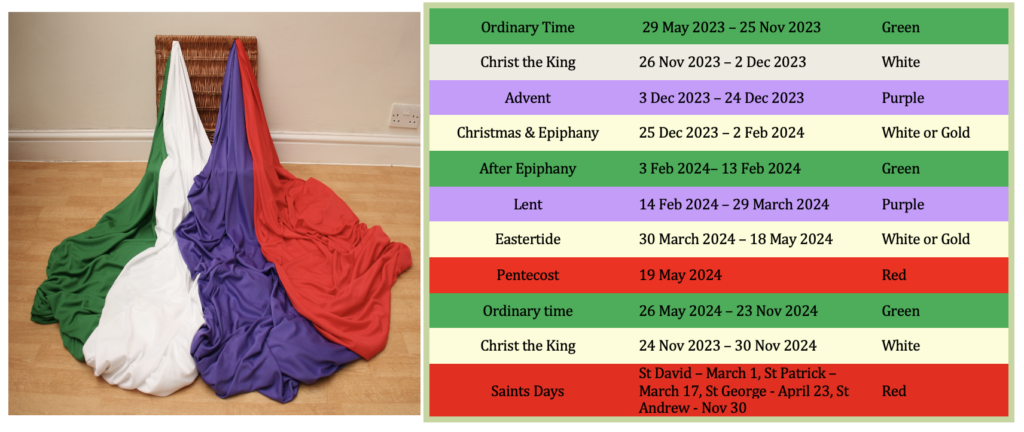Downloaded resources may be shared, (without breaking copyright), ONLY within the school community that has made the purchase, and NOT shared more widely.
ROOTS AND FRUITS Whole school Collective Worship for Primary Schools on Christian values themes
-
-
- In what format is the Roots and Fruits resource? Roots and Fruits is a printed book. The parts of each session which are shared with everyone attending the collective worship are available to download from the Imaginor website.
- What supporting resources are available for Roots and Fruits? Pictures, prayers, dramas, songs etc can be downloaded. A full list of downloadable resources can be seen on page 278 of the book.
- How do I access supporting resources for Roots and Fruits? To download supporting resources for Roots and Fruits use password on page 278 of the book. Go to the Roots and Fruits page on the Imaginor website https://www.imaginor.co.uk/roots-fruits/ and scroll to foot of the page. Then click on ‘supporting resources’. You will be asked for the password and then taken to a page with all the files. To print from the files, you will probably need to first save them to your computer.
- Which values are covered? How many worship sessions for each value?
The values covered in Roots and Fruits are Compassion, Courage, Forgiveness, Friendship, Generosity, Justice, Perseverance, Respect, Service, Thankfulness, Trust and Truthfulness. Each value is the theme for 6 collective worships (one a week for half a term) the final session for each half term linking to the appropriate church season.
-
ROOTS AND FRUITS 2 Collective Worship for Primary Schools rooted in the life and teaching of Jesus
-
-
- How is Roots and Fruits 2 different to the first volume? It is a one year programme of collective worship rooted in the life and teaching of Jesus Christ and focussing on the six values Wisdom, Hope, Community, Dignity, Peace and Joy. Poetry, art, story, drama, puppets, symbol and reflection & mindfulness strategies will all help to bring Jesus’ teaching alive for children.
- Does Roots and Fruits 2 have supporting resources? For most acts of worship, a PowerPoint presentation can be downloaded containing all parts of the worship that the text indicates should be shared on screen
- How do I access supporting resources for Roots and Fruits 2? Use the password on page 2 of the book, opposite the contents page. Just click on the ‘supporting resources’ tab at the foot of the Roots & Fruits 2 page on the Imaginor website, type in the password, click return and you will be taken to a page with all the available downloadable files.
- What are the themes for each half term? The book is split into 6 chapters, one for each half term, Chapter themes are: The Words of Jesus; Advent and Christmas; People Jesus meets; Lent and Easter; the Parables of Jesus; the Miracles of Jesus.
-
JACK IN THE BOX BIG BIBLE STORY Volumes 1 and 2
-
-
- What is the format of this resource? 2 printed books, together providing 2 years of materials for a weekly worship session. Once the book(s) has been purchased, all the worship sessions are available to download. Each volume is a stand-alone resource.
-
HOME SCHOOL VALUES
-
-
- Is this available as a downloadable resource? Yes. After purchasing the book, use the password on the Introduction page to access all the sheets , plus extras, in digital format.
- Can I share the digital sheets? Yes. These can be shared with parents and/or posted on your school website.
-
SEASONS OF THE CHURCH YEAR – an overview
-
-
- The church calendar is made up of seasons that follow the life of Jesus. The church year begins in late November or early December with Advent, a time of preparation for Jesus’ birth. In Christian churches one of four colours – purple, green, gold (or white) and red – referred to as ‘liturgical colours’, are used for altar linen, clergy robes and various hangings. The colour reflects the season, so that for instance in Advent purple is used, a colour of royalty because we are preparing to welcome the coming of a king. Purple is used again in Lent because it also symbolises suffering and pain.
At Christmas and Easter the colour changes to white or gold, both bright optimistic colours for festivals, times for joy and celebration. Between the festivals green cloths symbolise all living things, renewal and promise of new life. And finally, red is the colour of fire, used in churches to celebrate Pentecost and saints’ days.
- The church calendar is made up of seasons that follow the life of Jesus. The church year begins in late November or early December with Advent, a time of preparation for Jesus’ birth. In Christian churches one of four colours – purple, green, gold (or white) and red – referred to as ‘liturgical colours’, are used for altar linen, clergy robes and various hangings. The colour reflects the season, so that for instance in Advent purple is used, a colour of royalty because we are preparing to welcome the coming of a king. Purple is used again in Lent because it also symbolises suffering and pain.
(We hope this information is useful for teachers. However it is enough for young children simply to be aware that there is a cycle of different colours to celebrate times and seasons in the church year.)
-

